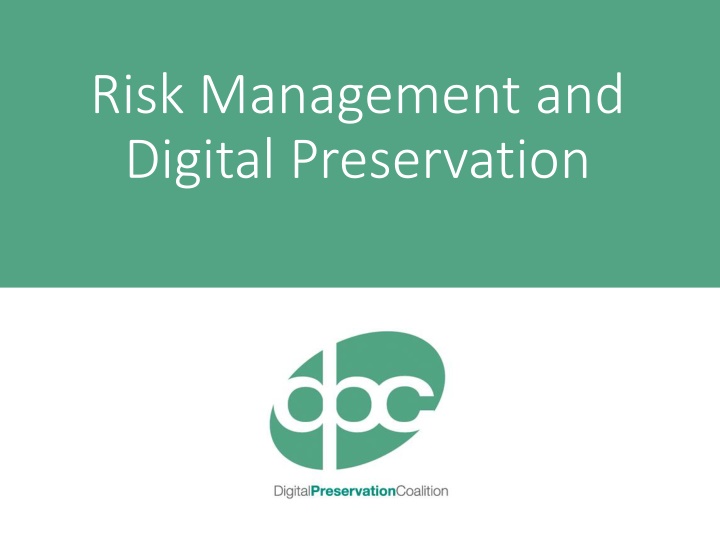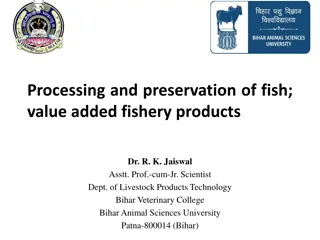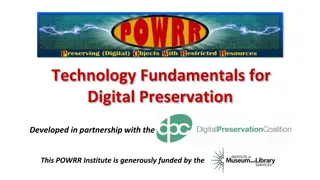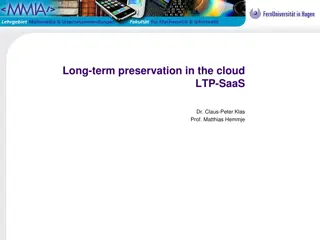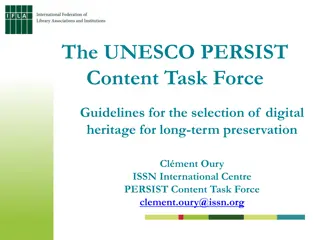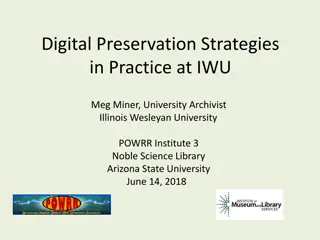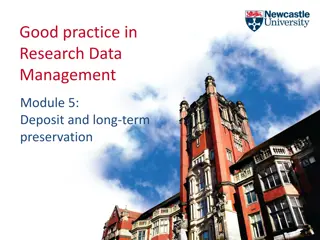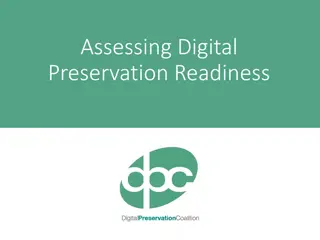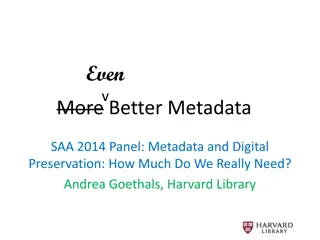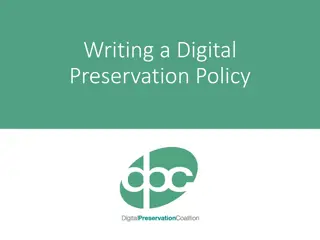Risk Management Basics for Digital Preservation
The key concepts of risk management in digital preservation including identifying risks, consequences, mitigation strategies, and monitoring. Understand the importance of managing risks to ensure continued access to digital materials.
Download Presentation

Please find below an Image/Link to download the presentation.
The content on the website is provided AS IS for your information and personal use only. It may not be sold, licensed, or shared on other websites without obtaining consent from the author.If you encounter any issues during the download, it is possible that the publisher has removed the file from their server.
You are allowed to download the files provided on this website for personal or commercial use, subject to the condition that they are used lawfully. All files are the property of their respective owners.
The content on the website is provided AS IS for your information and personal use only. It may not be sold, licensed, or shared on other websites without obtaining consent from the author.
E N D
Presentation Transcript
Risk Management and Digital Preservation
What is Digital Preservation? the series of managed activities necessary to ensure continued access to digital materials for as long as necessary (Digital Preservation Handbook) Illustration by J rgen Stamp digitalbevaring.dk CC BY 2.5 Denmark
Risk Management Basics What is risk? What is risk management? ISO:31000 Positive and negative Why is risk management a good thing [for digital preservation]? Illustration by J rgen Stamp digitalbevaring.dk CC BY 2.5 Denmark
Overview of RM Process IDENTIFY INTERNAL AND EXTERNAL CONTEXT IDENTIFY RISKS MONITOR AND REVIEW COMMU- NICATE ANALYSE AND ASSESS RISKS MANAGE AND TREAT RISKS
RM Basics Identify risk Consider consequences Assign scores Determine mitigation Update scores Frequency/Proximity Owner Trend Review Assign risk areas Define appetite Opportunity as well as risk Illustration by J rgen Stamp digitalbevaring.dk CC BY 2.5 Denmark
Identifying Risks Some examples of risks to digital media: File format obsolescence Media degradation (bit rot) Media obsolescence Hardware obsolescence Viruses Dissociation (loss of context) Network failures etc Illustration by J rgen Stamp digitalbevaring.dk CC BY 2.5 Denmark
Example Risk RISK Contents of archive drive deleted by accident Consequence Data loss, Disassociation of other data sets Likelihood 4 Impact 5 Score 20 Frequency Weekly, sudden Owner Senior Information Risk Owner Regular tiered back-ups, integrity checking, access policy, strict control of permissions, staff training Response New Likelihood 2 New Impact 2 New Score 4 Frequency of Review Annual
Taking It Further Risk appetite Explosive risks Risk AND opportunity PRINCE2 project management Intelligent Risk Management low consequence high risk high risk low consequence high consequence Risks low risk low risk high consequence Consequences
DRAMBORA Method Discrete phases of self-assessment, reflecting the realities of audit; Preservation is fundamentally a risk management process Define Scope Document Context Formalise Organisation Identify and Assess Risks www.repositoryaudit.eu
Some Resources ISO:31000 Risk management. Principles and guidance www.ico.org/iso/home/standards/iso31000.htm DRAMBORA www.repositoryaudit.eu/about/ TIMBUS www.timbusproject.net/ TNA digital continuity service www.nationalarchives.gov.uk/information-management/our-services/dc- risk-opportunities.htm SPOT www.dlib.org/dlib/september12/vermaaten/09vermaaten.html
